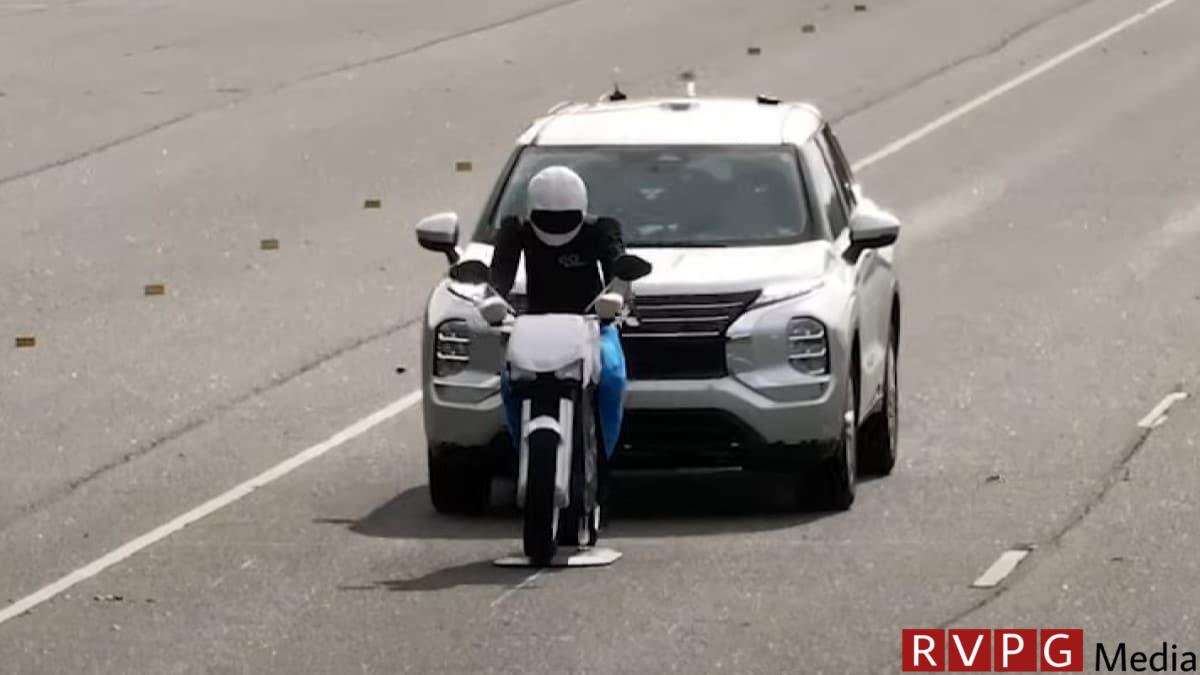Vehicle safety technology continues to advance. To keep up, one of America’s biggest auto safety watchdogs is coming up with increasingly tough tests. Ten compact SUVs battled to prevent accidents involving motorcycles and large trucks in the latest round. That’s worrying, but it’s also a sign of progress – vehicle safety is getting so good that experts need to make their tests more precise.
“The vast majority of new vehicles now come with automatic emergency braking, and our research shows that the technology prevents up to half of all front-rear crashes,” said David Harkey, president of the Insurance Institute for Highway Safety (IIHS). . “This new, more stringent assessment targets some of the most dangerous front-rear accidents still occurring.”
Your insurance company’s crash tests
There are two major crash test agencies in America.
Related: Car Safety Ratings and How They Work
One of these is the federal government’s National Highway Traffic Safety Administration (NHTSA). It crash tests every car model for sale in the United States and publishes safety ratings on a five-star scale.
The other is the IIHS – not a government agency. A group of insurance companies finances the institute. Accidents and injuries cost insurance companies money, so they are motivated to prevent them.
The IIHS is more flexible than a government agency. The IIHS is not subject to a complicated public review system and can add new tests and change old tests with relative ease. Many in the automotive industry consider the institute to be the stricter inspector.
The IIHS regularly pushes automakers for new safety innovations by making it harder to pass its tests.
The new tests
This year the tests involve higher speeds and more types of vehicles to avoid.
The institute’s old crash prevention tests examined whether automatic emergency braking could prevent a car from colliding with another vehicle at 12 and 25 miles per hour.
According to IIHS, the new procedure includes “tests at speeds of 31, 37 and 43 miles per hour (50, 60 and 70 kilometers per hour). In addition to a car target, the performance is also examined with a motorcycle target and a semi-trailer.”
The institute says it consulted with police groups when developing the new tests.
Senior research scientist David Kidd says: “Fatal underride accidents often occur when the vehicle struck is a large truck, and motorcyclists are often killed when they are hit by a passenger car because their bike has no protection from the impact offers.”
During each test, “an engineer drives the test vehicle toward the target at the selected speed and records when the forward collision warning occurs and how much the AEB system slows the vehicle to prevent or mitigate the impending impact.” If the test vehicle succeeds If the slower test speeds do not achieve a minimum speed reduction, only the forward collision warning system is evaluated in the higher speed tests.”
The tests use a simulated car and motorcycle with a driver, so test vehicles can safely collide with them if the systems fail to stop an accident. The trailer is real, but “all test drives with the trailer evaluate only the forward collision warning system and the driver steers out of the lane to avoid an accident,” the IIHS says.
The results
The institute awards the grades “Good”, “Acceptable”, “Fair” and “Poor”. Only one of the ten SUVs tested – the Subaru Forester – achieved a “Good” rating. Even this meant that not all accidents could be avoided.
The IIHS says the Forester “avoided a collision with the car target at every test speed, failed to hit the motorcycle target at 31 and 37 mph, and slowed an average of 30 mph during the 43 mph tests, before he hit the motorcycle target.” It gave the riders a warning of at least 2.1 seconds in every situation.
